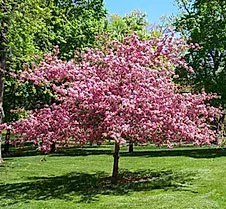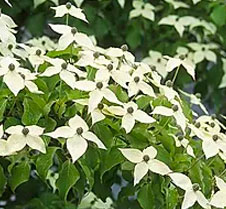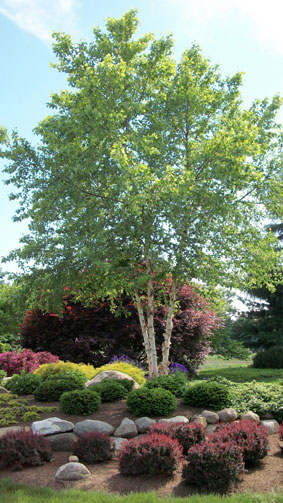Emerald Acres regularly cares for over 100,000 tree and shrub specimens. Most of these plants respond well to treatment and with time and care become beautiful additions to the landscape. Over the years it has become clear that a few species require an inordinate amount of time and expense to care for. In this article I will discuss some popular landscape plant selections that have critical flaws, and will make suggestions for alternative varieties that are equally attractive yet less demanding.

Many landscapes are adorned with the ever-popular Cherry tree. Their delicate foliage, unique bark texture, and the profusion of pink flowers each spring are undeniably attractive. Unfortunately, Cherry trees have some serious health issues. White prunicola scale is a common killer of the Cherry tree and frost cracks can also lead to their demise. Scales are piercing, sucking insects that attach themselves to the bark and feed on the tree. The name “scale” refers to the growth of a hard shield-like outer layer that covers the tiny insect, protecting it from the environment as well as pesticide sprays. As an alternative, consider the Bradford or Calary Pears. Pears bloom each spring with abundant white blossoms. Their leaves are a dark, glossy green, and small fruit drupes persist into winter. Crab Apples are another good choice. They bloom profusely and range in color from white to deep red. When choosing Crab Apples it is important to select varieties that are naturally resistant to rust and scab diseases.

Cornus florida or Flowering Dogwood is admittedly one of the most lovely spring flowering trees; its graceful branches and showy flowers possess abundant charm to rival many a worthy specimen. It is, however, susceptible to Anthracnose; a common disease which can cause leaf, stem and branch dieback. While fungicides are available to keep anthracnose in check, treatments are frequent and costly. Cornus kousa or Kousa Dogwood maintains the elegant charm of the species without the disease issues associated with C. florida. Kousa Dogwoods are beautiful in bloom and the show does not stop there. The kousa exhibits multi-colored, exfoliating bark, and a red fruit drupe, providing interest to span the seasons.

Most of us have now heard of the little insect blighting hemlock groves. Hemlock Wooley Adelgid has moved this once low maintenance tree to the high maintenance column. If the pest is found, regular applications of insect control will be needed. As an alternative to hemlocks, consider the Leyland Cypress and White Fir. Cypress are wonderful trees, and the Leyland is fast growing and strong, with dark green foliage and yellow highlights. White Firs have no insect or disease issues and are a truly beautiful screen or individual landscape specimen.

Another popular landscape plant is the Birch tree. Birches are graceful whether in singular or clump form and often have interesting bark characteristics. Many varieties of birches are available; several of which are susceptible to Bronze Birch Borer. This insect feeds on the cambium layer just under the bark, cutting off circulation, and quickly killing everything above the injury point. Frequently, gorgeous birch trees in full maturity fall victim to bronze birch borer. Consider Betula nigra or “Rivers Birch”, it is a near perfect tree. Its shaggy reddish brown bark, and graceful limbs and foliage are a welcome addition to any landscape. It is highly resistant to borer, and is well adapted to area soils and climate.
Ultimately, the choice of landscape plants is yours to make. When consideration is given to the requirements of each species you will no doubt be rewarded with healthy trees and shrubs for years to come.
Written by Rebecca Mola
MA Certified Arborist
Office Manager
